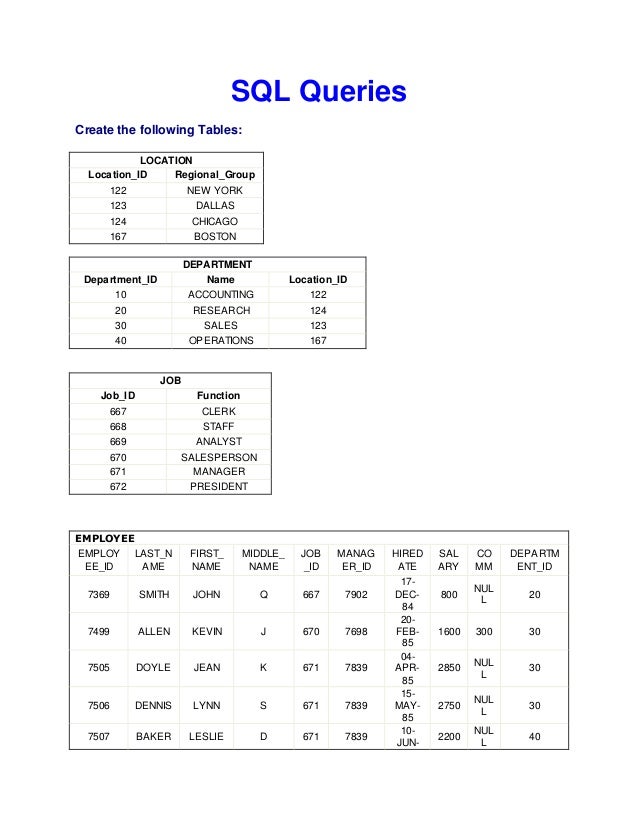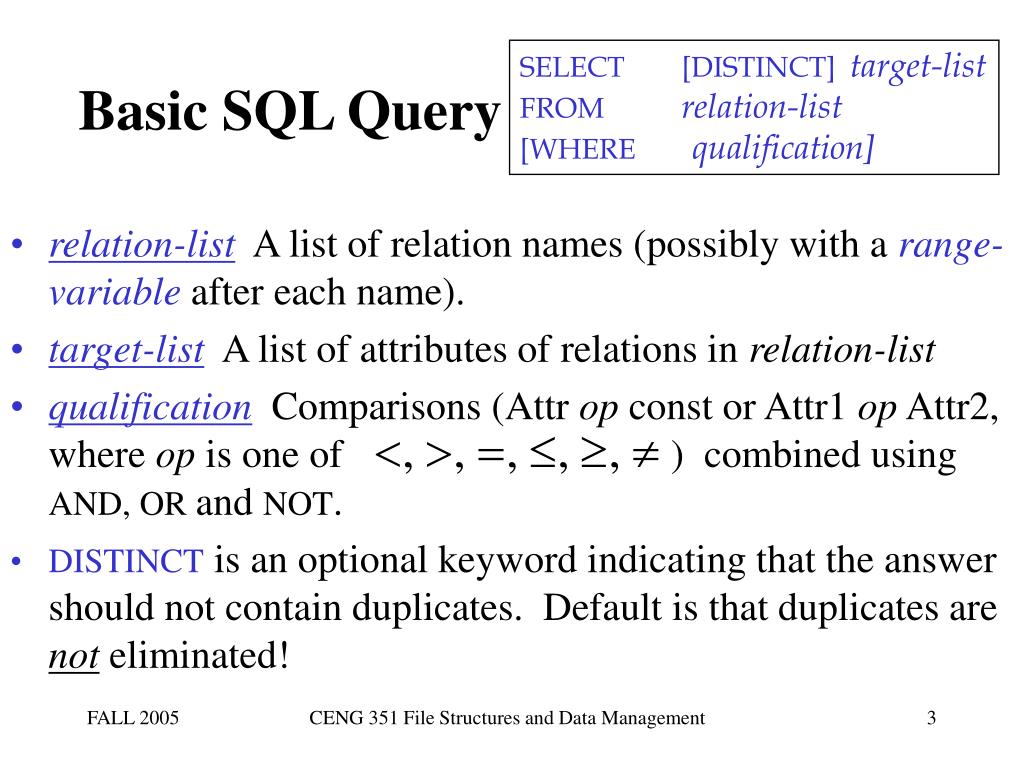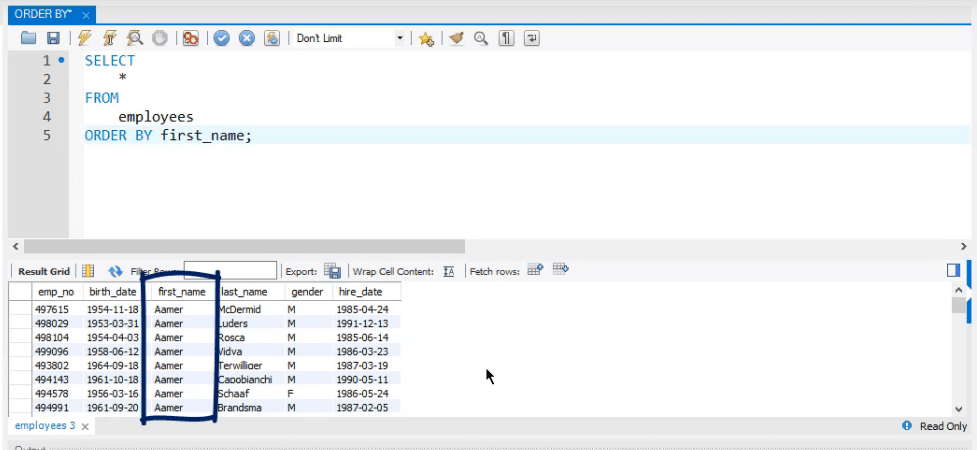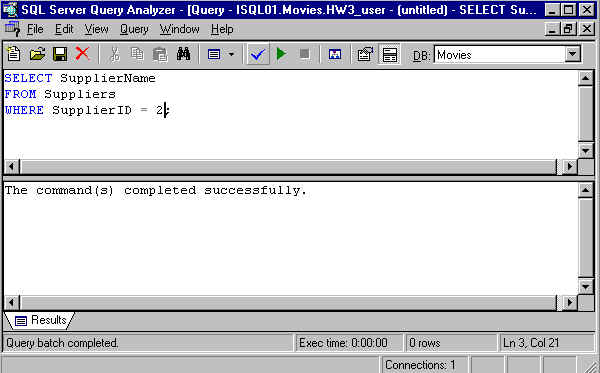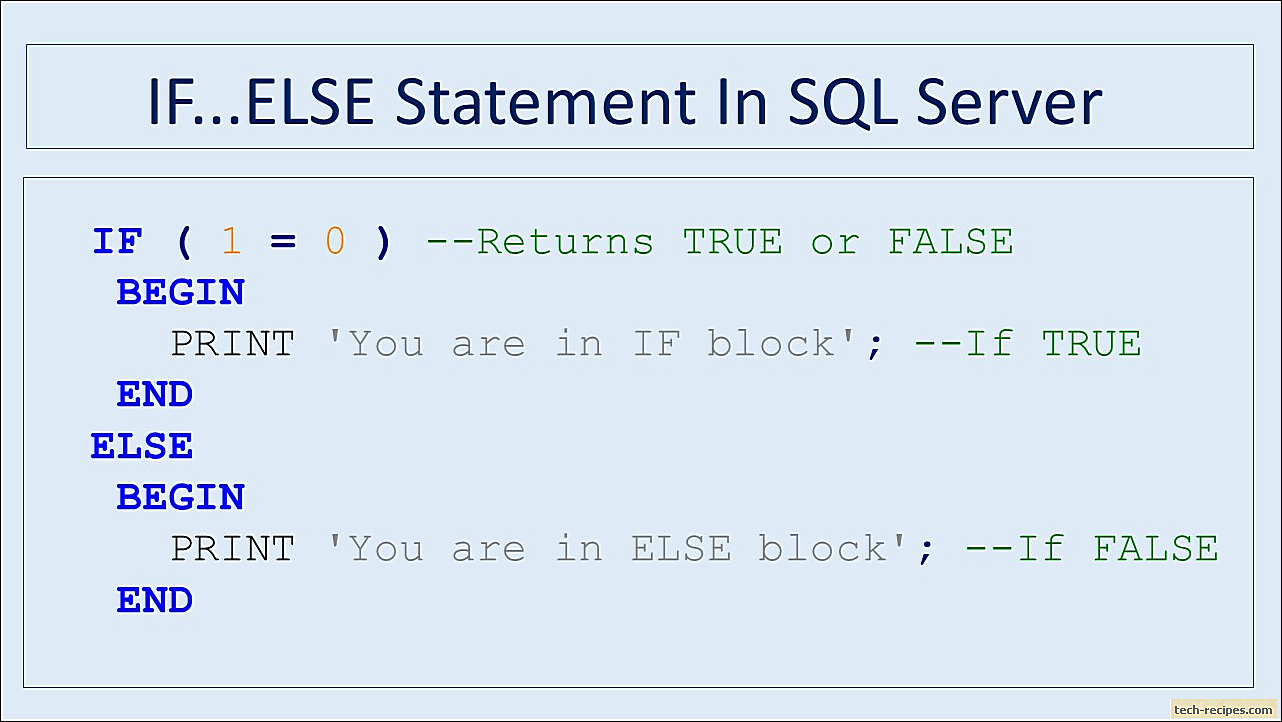We can group the resultset in SQL on a number of column values. All the column values outlined as grouping standards could match with different data column values to group them to a single record. Expression_n Expressions that aren't encapsulated inside an combination perform and could be included within the GROUP BY Clause on the top of the SQL statement. Aggregate_function This is an combination perform resembling the SUM, COUNT, MIN, MAX, or AVG functions. Aggregate_expression This is the column or expression that the aggregate_function might be used on. There could be a minimum of one desk listed within the FROM clause.
These are circumstances that should be met for the files to be selected. The expression used to type the files within the consequence set. If a number of expression is provided, the values ought to be comma separated. ASC types the consequence set in ascending order by expression. DESC types the consequence set in descending order by expression. Let us use the mixture features within the group by clause with a number of columns.
Grouping on a variety of columns is most frequently used for producing queries for reports, dashboarding, etc. The GROUP BY clause teams mutually rows in a desk with non-distinct values for the expression within the GROUP BY clause. For a variety of rows within the supply desk with non-distinct values for expression, theGROUP BY clause produces a single mixed row. GROUP BY is usually used when combination capabilities are current within the SELECT list, or to get rid of redundancy within the output. At a excessive level, the method of aggregating information may be described as making use of a operate to numerous rows to create a smaller subset of rows.
In practice, this typically seems to be like a calculation of the whole remember of the variety of rows in a dataset, or a calculation of the sum of all the rows in a specific column. For a extra complete rationalization of the fundamentals of SQL combination functions, take a look at the mixture capabilities module in Mode's SQL School. Group by is completed for clubbing collectively the knowledge which have the identical values for the standards which might be outlined for grouping. The GROUP BY fact is used to teams the rows which have the identical values in a brand new abstract row and it's the lead actor of the mixture queries. ROLLUP, CUBE, and GROUPING SETS are extensions of the GROUP BY fact and add the additional subtotal and grand complete rows to the resultset.
In order to calculate a subtotal in SQL query, we will use the ROLLUP extension of the GROUP BY statement. The ROLLUP extension permits us to generate hierarchical subtotal rows in response to its enter columns and it additionally provides a grand complete row to the outcome set. For example, the GROUP BY ROLLUP assertion solely provides the grand complete of all years to the outcome set however the GROUP BY ROLLUP assertion will add the next further rows to the outcome set. ROLLUP is an extension of the GROUP BY clause that creates a gaggle for every of the column expressions. Additionally, it "rolls up" these ends in subtotals observed by a grand total.
Under the hood, the ROLLUP operate strikes from appropriate to left reducing the variety of column expressions that it creates teams and aggregations on. Since the column order impacts the ROLLUP output, it will probably even impact the variety of rows returned within the end result set. The GROUP BY clause is usually utilized in SQL statements which retrieve numerical data. It is usually used with SQL capabilities like COUNT, SUM, AVG, MAX and MIN and is used primarily to combination data. Data aggregation enables values from a variety of rows to be grouped mutually to kind a single row.
The first desk reveals the marks scored by two college students in a few various subjects. The most vital preconditions for utilizing indexes for GROUP BY are that each one GROUP BY columns reference attributes from the identical index, and that the index shops its keys so as . The Group by clause is usually used to rearrange similar duplicate facts into teams with a choose fact to group the result-set by a variety of columns. This clause works with the choose designated listing of items, and we will use HAVING, and ORDER BY clauses. Group by clause usually works with an combination carry out like MAX, MIN, SUM, AVG, COUNT. This syntax permits customers to carry out evaluation that requires aggregation on a variety of units of columns in a single query.
Complex grouping operations don't assist grouping on expressions composed of enter columns. The ORDER BY clause specifies a column or expression because the type criterion for the end end result set. If an ORDER BY clause isn't present, the order of the outcomes of a question isn't defined. Column aliases from a FROM clause or SELECT record are allowed.
If a question consists of aliases within the SELECT clause, these aliases override names within the corresponding FROM clause. The GROUP BY clause teams a set of rows right into a set of abstract rows by values of columns or expressions. In different words, it reduces the variety of rows within the end result set. The above question contains the GROUP BY DeptId clause, so that you possibly can embrace solely DeptId within the SELECT clause. You should use combination capabilities to incorporate different columns within the SELECT clause, so COUNT is included considering the fact that we wish to be counted the variety of workers within the identical DeptId.
You have to use the mixture features reminiscent of COUNT(), MAX(), MIN(), SUM(), AVG(), etc., within the SELECT query. The results of the GROUP BY clause returns a single row for every worth of the GROUP BY column. The GROUP BY clause is a SQL command that's used to group rows which have the identical values. Optionally it really is used at the side of combination features to supply abstract stories from the database. Instead, you could exchange this work with a single GROUP BY question that calculates every salesperson's statistics within the company.
You write the question and specify that the database need to group the outcomes centered upon the Salesperson field. You might then use any of the SQL combination capabilities to carry out calculations on the results. It isn't permissible to incorporate column names in a SELECT clause that aren't referenced within the GROUP BY clause. The solely column names that might be displayed, together with combination functions, have to be listed within the GROUP BY clause. Since ENAME isn't included within the GROUP BYclause, an error message results.
The OVER clause defines a window or user-specified set of rows inside a question end outcome set. A window operate then computes a worth for every row within the window. You can use the OVER clause with features to compute aggregated values resembling transferring averages, cumulative aggregates, operating totals, or a prime N per group results.
You can use the SQL PARTITION BY clause with the OVER clause to specify the column on which we have now to carry out aggregation. PARTITION BY provides aggregated columns with every file within the required table. If we have now 15 information within the table, the question output SQL PARTITION BY additionally will get 15 rows. On the opposite hand, GROUP BY provides one row per group in end result set. In some cases, MySQL is ready to do significantly greater than that and prevent creation of short-term tables through the use of index access.
Like most issues in SQL/T-SQL, you will normally pull your information from a number of tables. Performing this process when such as a GROUP BY clause is not any distinct than some different SELECT truth with a GROUP BY clause. The incontrovertible truth that you're pulling the info from two or extra tables has no bearing on how this works. In the pattern below, we'll be working within the AdventureWorks2014 as soon as extra as we subscribe to the "Person.Address" desk with the "Person.BusinessEntityAddress" table. I even have additionally restricted the pattern code to return solely the highest 10 effects for readability sake within the end outcome set.
How Do You Write A Group By Query In Sql In this query, all rows within the EMPLOYEE desk which have the identical division codes are grouped together. The combination operate AVG is calculated for the wage column in every group. The division code and the typical departmental wage are displayed for every department.
The GROUP BY clause arranges rows into the groups, and the mixture operate returns a abstract (count, min, max, average, sum, etc.) for every group. SQL GROUP BY clause in SQL is used to rearrange the identical info into teams with the assistance of some functions. The teams are decided by the desk columns that you simply specify in a GROUP BYclause. The combination features assist you to carry out the calculation of a set of rows and return a single value. The GROUP BY clause is usually used with an combination operate to carry out calculations and return a single worth for every subgroup. Use theSQL GROUP BYClause is to consolidate like values right into a single row.
The group by returns a single row from a number of inside the question having the identical column values. Its foremost objective is that this work alongside functions, resembling SUM or COUNT, and supply a way to summarize values. The GROUP BY clause is usually used with combination capabilities resembling AVG(), COUNT(), MAX(), MIN() and SUM(). In this case, the mixture operate returns the abstract facts per group. For example, given teams of merchandise in a number of categories, the AVG() operate returns the typical worth of merchandise in every category.
The GROUP BY clause divides the rows returned from the SELECTstatement into groups. For every group, possible apply an combination operate e.g.,SUM() to calculate the sum of things or COUNT()to get the variety of things within the groups. As an example, we're going to make use of the output of the SQL question named Python as an enter to our Dataframe in our Python notebook. Note that this Dataframe doesn't have any of the aggregation features being calculated by way of SQL.
It's only applying SQL to pick the required fields for our analysis, and we'll use pandas to do the rest. An additional advantage of conducting this operation in Python is that the workload is moved out of the info warehouse. FILTER is a modifier used on an combination operate to restrict the values utilized in an aggregation.
All the columns within the pick out assertion that aren't aggregated must be laid out in a GROUP BY clause within the query. In the Group BY clause, the SELECT assertion can use constants, combination functions, expressions, and column names. The SQL GROUP BY clause permits us to group particular person info established on outlined criteria. You can group particular person info by a number of desk columns.
In order to do the grouping properly, you regularly must use combination features to the column inside the SQL SELECT statement. When you begin gaining knowledge of SQL, you rapidly encounter the GROUP BY clause. Data grouping—or files aggregation—is a very necessary theory on this planet of databases. In this article, we'll show how one can use the GROUP BY clause in practice. We've gathered 5 GROUP BY examples, from extra straightforward to extra complicated ones so you'll be able to still see files grouping in a real-life scenario.
As a bonus, you'll additionally be taught a bit about combination features and the HAVING clause. The GROUP BY clause arranges rows into teams and an combination perform returns the abstract (count, min, max, average, sum, etc.,) for every group. The SELECT assertion utilized within the GROUP BY clause can solely be used include column names, combination functions, constants and expressions.
The combination capabilities don't embody rows which have null values within the columns concerned within the calculations; that is, nulls usually are not dealt with as within the event that they have been zero. GROUP BY in SQL is usually used with the mixture capabilities to group the outcome by a number of columns. The MIN and MAX capabilities are used to search out the minimal and optimum values of fields. When used in conjunction with the GROUP BY clause, the MIN and MAX capabilities will compute the minimal and optimum values for the fields chosen for aggregation. A subquery with a recursive desk reference can't invoke combination functions.
The INTERSECT operator returns rows which might be present within the consequence units of equally the left and appropriate enter queries. Unlike EXCEPT, the positioning of the enter queries doesn't matter. SELECT AS STRUCT should be utilized in a scalar or array subquery to supply a single STRUCT kind grouping a number of values together. Scalar and array subqueries are usually not allowed to return a number of columns, however can return a single column with STRUCT type. The solely combination features utilized within the choose record are MIN() and MAX(), and all of them discuss with the identical column.
The column have to be within the index and want to right away comply with the columns within the GROUP BY. The GROUP BY clause is utilized in a SELECT fact to group rows right into a set of abstract rows by values of columns or expressions. What if we wish to filter the values returned from this question strictly to start off out station and finish station mixtures with greater than 1,000 trips? Since the SQL the place clause solely helps filtering files and never consequences of aggregation functions, we'll have to seek out a further way. Adding a HAVING clause after your GROUP BY clause requires that you simply include any distinguished circumstances in equally clauses. If the SELECT fact includes an expression, then it follows go well with that the GROUP BY and HAVING clauses want to include matching expressions.
It is analogous in nature to the "GROUP BY with an EXCEPTION" pattern from above. In the subsequent pattern code block, we at the moment are referencing the "Sales.SalesOrderHeader" desk to return the full from the "TotalDue" column, however just for a specific year. Another extension, or sub-clause, of the GROUP BY clause is the CUBE. The CUBE generates a number of grouping units in your specified columns and aggregates them. In short, it creates exclusive teams for all feasible mixtures of the columns you specify. For example, when you employ GROUP BY CUBE on of your table, SQL returns teams for all exclusive values , , and .
The SUM() perform returns the entire worth of all non-null values in a specified column. Since this can be a mathematical process, it can't be used on string values resembling the CHAR, VARCHAR, and NVARCHAR files types. When used with a GROUP BY clause, the SUM() perform will return the entire for every class within the required table. SQL makes it possible for the consumer to keep greater than 30 kinds of knowledge in as many columns as required, so sometimes, it turns into complicated to search out comparable files in these columns. Group By in SQL helps us membership jointly comparable rows current within the columns of a table. This is a vital fact in SQL because it gives you us with a neat dataset by letting us summarize primary files like sales, cost, and salary.
In Microsoft Access, GROUP BY is a clause you need to use to mix information with similar values in a selected subject in a single record. If you incorporate an SQL combination operate within the SELECT statement, similar to AVG, COUNT, or SUM, Access creates a abstract worth for every record. The GROUP BY clause is generally used together with 5 built-in, or "aggregate" functions.
These capabilities carry out unique operations on a whole desk or on a set, or group, of rows reasonably then on every row after which return one row of values for every group. We can observe that for the knowledgeable named Payal two data are fetched with session rely as 1500 and 950 respectively. Note that the mixture capabilities are used largely for numeric valued columns when group by clause is used. Criteriacolumn1 , criteriacolumn2,…,criteriacolumnj – These are the columns that might be regarded because the standards to create the teams within the MYSQL query. There might be single or a number of column names on which the standards have to be applied.
SQL doesn't enable employing the alias because the grouping standards inside the GROUP BY clause. Note that a number of standards of grouping must be referred to in a comma-separated format. A WITH clause incorporates a number of everyday desk expressions . A CTE acts like a short lived desk that you just could reference inside a single question expression. Each CTE binds the outcomes of a subqueryto a desk name, which might be utilized elsewhere inside the identical question expression, however regulations apply. The USING clause requires a column listing of a number of columns which take place in each enter tables.
